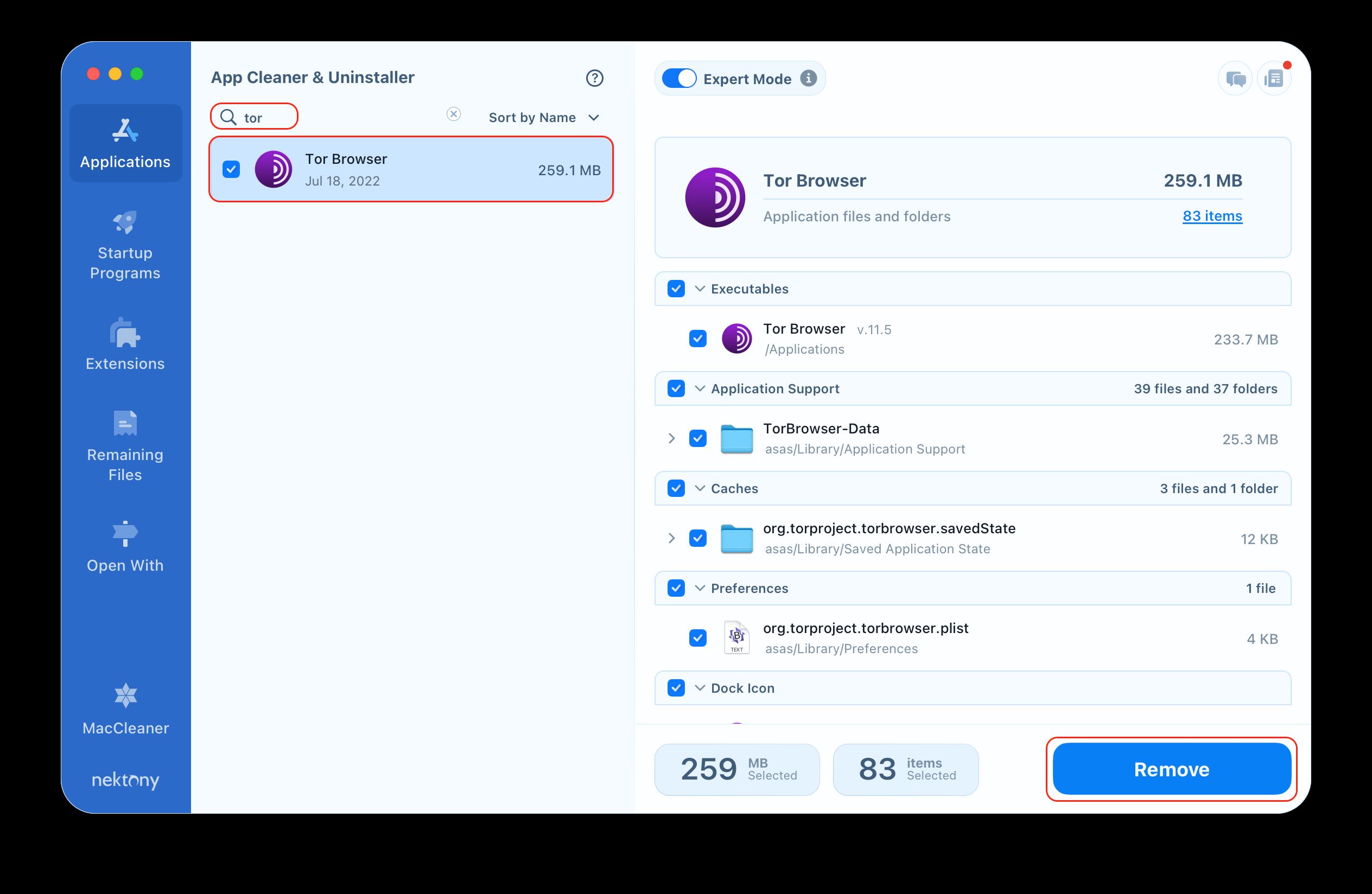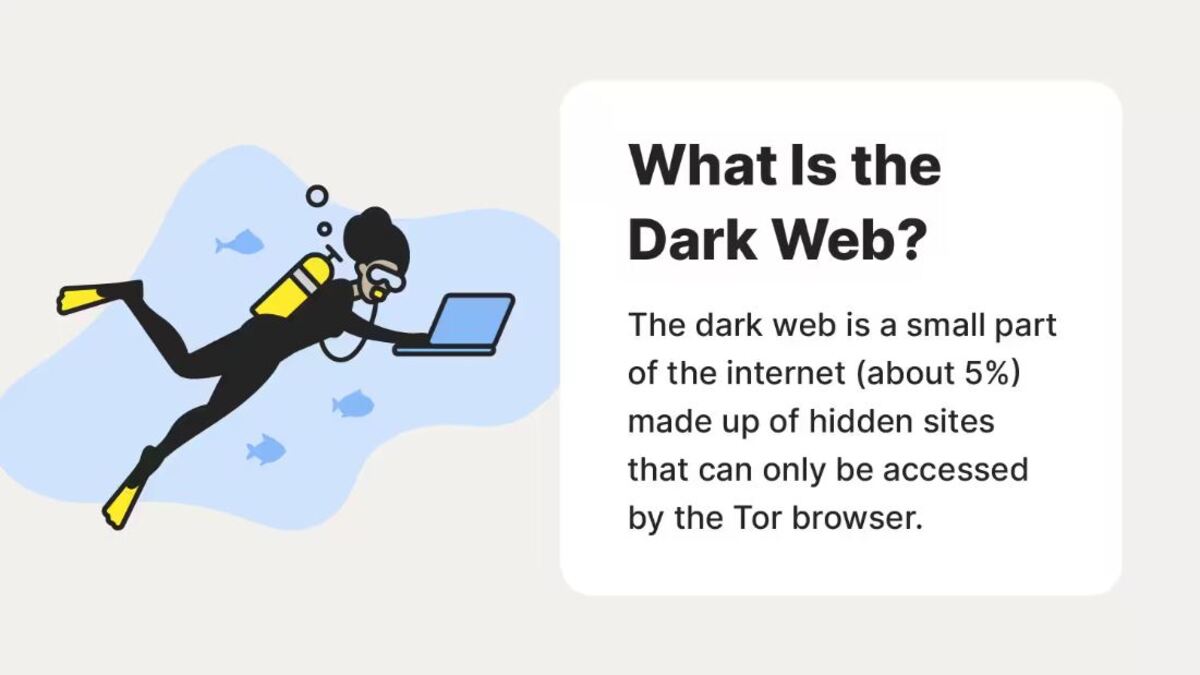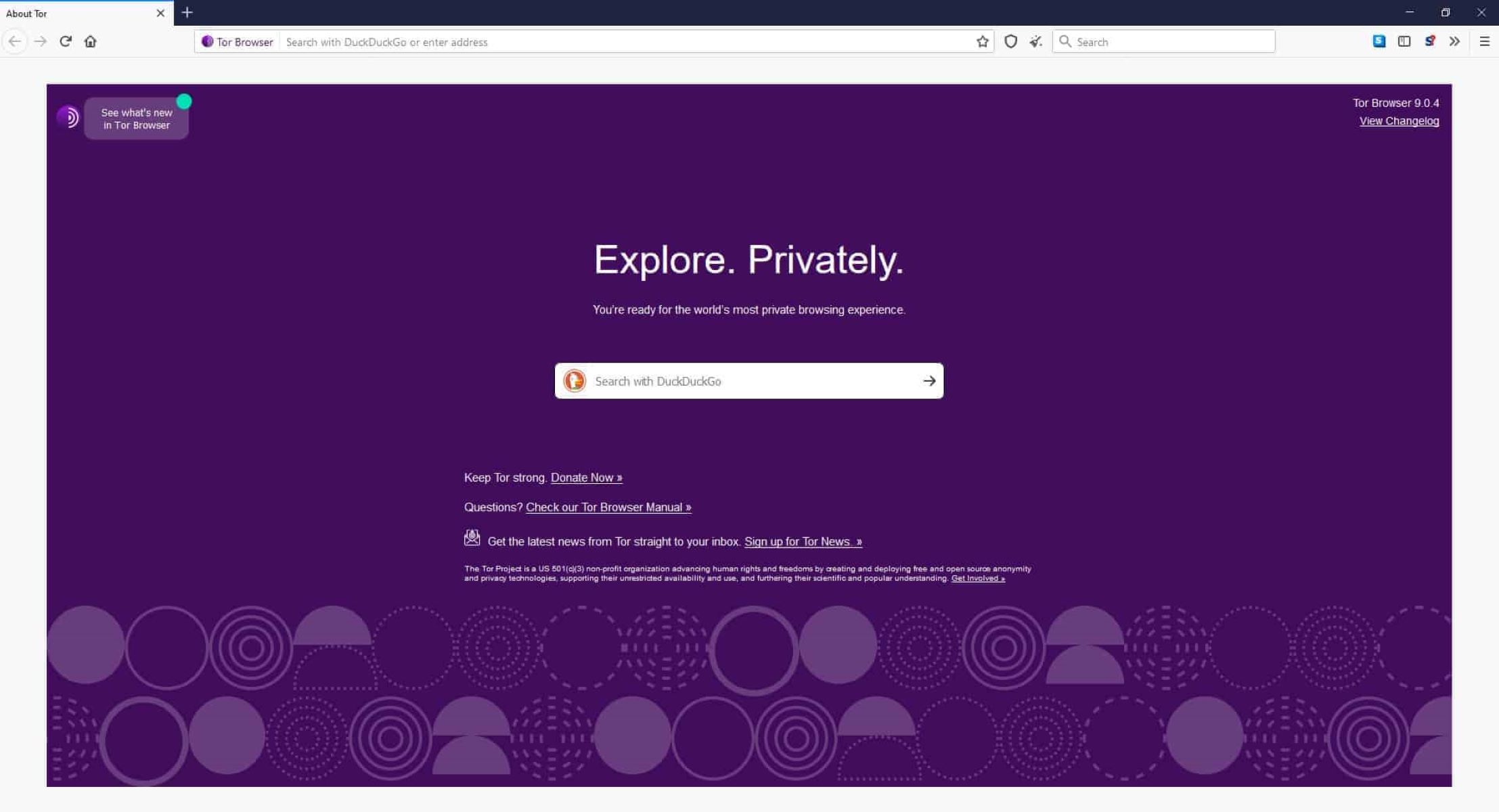Introduction
The digital landscape is a realm of endless possibilities, offering a gateway to a wealth of information and resources. However, this boundless expanse is not without its perils. Online privacy and security have become increasingly pertinent concerns in today's interconnected world. As individuals, we often find ourselves navigating through a labyrinth of data, leaving behind digital footprints that can be traced and exploited. In response to these challenges, the Tor Browser has emerged as a powerful tool for safeguarding online anonymity and protecting sensitive information.
In the age of ubiquitous surveillance and data mining, the need for privacy has never been more pronounced. Whether you are a journalist communicating with a confidential source, an activist advocating for social change, or simply a conscientious netizen seeking to shield your online activities from prying eyes, the Tor Browser offers a shield of anonymity and security. By understanding the inner workings of this innovative tool, we can unlock the potential to traverse the digital realm with confidence and peace of mind.
The Tor Browser stands as a beacon of hope in the realm of online privacy, empowering users to reclaim control over their digital footprint. As we delve into the intricacies of this remarkable browser, we will uncover the mechanisms that underpin its ability to anonymize internet traffic and thwart surveillance efforts. Moreover, we will explore the myriad benefits and limitations associated with using the Tor Browser, shedding light on its role as a formidable guardian of online privacy and security. Join us on this enlightening journey as we unravel the enigmatic workings of the Tor Browser and discover the power it bestows upon those who seek to navigate the digital realm incognito.
What is Tor Browser?
The Tor Browser, short for The Onion Router, is a specialized web browser designed to protect users' privacy and anonymity while browsing the internet. It is built upon the Tor network, a decentralized network that directs internet traffic through a global volunteer overlay network consisting of thousands of relays to conceal a user's location and usage from anyone conducting network surveillance or traffic analysis. The browser is based on Mozilla Firefox and is available for various operating systems, including Windows, macOS, and Linux.
One of the key features of the Tor Browser is its ability to anonymize internet traffic by routing it through a series of encrypted relays. This process involves wrapping data in multiple layers of encryption, akin to the layers of an onion, hence the name "The Onion Router." As a result, the user's internet traffic is bounced through a random sequence of these relays, making it extremely difficult for anyone to trace the origin of the data or the user's physical location.
In addition to anonymizing internet traffic, the Tor Browser also provides access to websites that are part of the dark web, a segment of the internet not indexed by traditional search engines. While the dark web is often associated with illicit activities, it also serves as a platform for individuals to communicate anonymously and access information in regions where internet censorship is prevalent.
Furthermore, the Tor Browser incorporates privacy-focused features, such as blocking third-party trackers and preventing websites from tracking users across different sites. It also includes built-in defenses against browser fingerprinting, a technique used to track users based on their unique browser and device configurations.
By leveraging the Tor Browser, users can browse the internet with a heightened sense of privacy and security, shielding their online activities from surveillance, censorship, and data harvesting. This makes it an invaluable tool for individuals and organizations seeking to safeguard sensitive communications, conduct research in restrictive environments, or simply exercise their right to online privacy.
In essence, the Tor Browser serves as a bastion of anonymity and privacy in an era where digital footprints are meticulously traced and exploited. Its innovative design and commitment to user privacy make it a vital instrument for those navigating the complex terrain of the digital realm.
How does Tor Browser work?
The Tor Browser operates on the principle of routing internet traffic through a series of encrypted relays to obfuscate the user's online activities and conceal their identity. This intricate process, often likened to the layers of an onion, comprises several key components that collectively contribute to its robust privacy and anonymity features.
When a user accesses the internet through the Tor Browser, their data undergoes a multi-step journey through the Tor network. The journey commences with the user's traffic being encrypted and routed through a randomly selected entry relay, the first node in the network. This initial encryption layer prevents the entry relay from discerning the user's actual IP address and originating location.
Subsequently, the data traverses through a series of intermediate relays, each adding a layer of encryption and forwarding the traffic to the next relay in the sequence. As the data progresses through these relays, it becomes increasingly challenging for any entity monitoring the network to trace the traffic back to its source, effectively cloaking the user's digital footprint.
Finally, the traffic reaches an exit relay, where the last layer of encryption is removed before the data is transmitted to its intended destination, such as a website or online service. This meticulous process of routing internet traffic through multiple relays serves to obfuscate the user's identity and location, thereby safeguarding their privacy and anonymity.
Moreover, the Tor Browser employs a decentralized network of volunteer-operated relays, ensuring that no single entity has complete visibility into the entire network. This distributed architecture enhances the resilience of the Tor network against surveillance and censorship, as well as mitigates the risk of a single point of failure compromising user privacy.
In essence, the Tor Browser's functionality hinges on the intricate orchestration of encrypted relays within the Tor network, culminating in a robust shield of anonymity for users navigating the digital landscape. By leveraging this innovative approach to internet traffic routing, the Tor Browser empowers individuals to traverse the online realm with heightened privacy and security, evading the prying eyes of surveillance and preserving their fundamental right to online anonymity.
The benefits of using Tor Browser
The utilization of the Tor Browser offers a myriad of compelling benefits, positioning it as a formidable ally for individuals and organizations seeking to fortify their online privacy and security. By harnessing the unique features and capabilities of the Tor Browser, users can unlock a host of advantages that transcend conventional web browsing experiences.
1. Enhanced Anonymity:
The foremost benefit of using the Tor Browser lies in its ability to cloak the user's online activities and obscure their digital footprint. By routing internet traffic through a series of encrypted relays, the browser effectively conceals the user's IP address and location, thwarting attempts at surveillance and tracking. This heightened level of anonymity empowers users to browse the internet without the fear of being monitored or profiled based on their online behavior.
2. Protection Against Surveillance:
In an era characterized by pervasive surveillance and data collection, the Tor Browser serves as a potent shield against unwarranted scrutiny. By obfuscating internet traffic and preventing eavesdropping, it bolsters users' defenses against surveillance efforts by governments, internet service providers, and malicious actors seeking to monitor online activities. This safeguarding of privacy is particularly crucial for individuals operating in regions with stringent censorship or facing potential repercussions for expressing dissenting views.
3. Access to Restricted Content:
The Tor Browser facilitates access to websites and online services that may be restricted or censored in certain geographical locations. This capability is instrumental for individuals seeking to bypass internet censorship and access information that is otherwise inaccessible through conventional means. It empowers users to exercise their right to access knowledge and communicate freely, transcending barriers imposed by authoritarian regimes or restrictive internet policies.
4. Protection of Sensitive Communications:
For journalists, activists, and individuals engaged in sensitive communications, the Tor Browser serves as a vital tool for safeguarding confidential exchanges. By encrypting internet traffic and anonymizing the user's identity, it fortifies the security of sensitive communications, shielding them from interception and surveillance. This feature is indispensable for preserving the integrity of investigative journalism, protecting whistleblowers, and fostering open dialogue in environments where freedom of expression is under threat.
5. Defenses Against Tracking and Profiling:
The Tor Browser incorporates robust privacy features that mitigate the risks of online tracking and browser fingerprinting. By blocking third-party trackers and thwarting attempts to create user profiles based on browsing behavior, it empowers users to reclaim control over their online privacy. This defense mechanism is pivotal in countering the pervasive data collection practices employed by advertisers and online entities seeking to monetize user data.
In essence, the Tor Browser stands as a bastion of online privacy and security, offering a suite of benefits that resonate with individuals and organizations navigating the digital landscape. By embracing the Tor Browser, users can harness the power of anonymity, thwart surveillance efforts, access restricted content, safeguard sensitive communications, and fortify their defenses against online tracking and profiling. This amalgamation of benefits underscores the pivotal role of the Tor Browser in empowering users to reclaim control over their digital footprint and traverse the online realm with confidence and resilience.
The limitations of using Tor Browser
While the Tor Browser stands as a stalwart guardian of online privacy and anonymity, it is essential to acknowledge the inherent limitations associated with its usage. Understanding these limitations is crucial for users seeking to make informed decisions regarding their online activities and security measures. By shedding light on the constraints of the Tor Browser, individuals can adopt a balanced approach to leveraging its capabilities while remaining cognizant of its inherent drawbacks.
1. Performance and Speed:
The intricate process of routing internet traffic through multiple encrypted relays inherently introduces latency and can impact browsing speed. As data traverses through the decentralized Tor network, the additional layers of encryption and relay hops can lead to slower loading times for websites and online services. While this trade-off is a necessary component of the anonymity provided by the Tor Browser, users may experience diminished browsing performance compared to traditional web browsers.
2. Incompatibility with Certain Websites:
Due to its anonymizing features and routing mechanisms, the Tor Browser may encounter compatibility issues with certain websites and online services. Some websites employ stringent security measures or employ anti-bot mechanisms that inadvertently block or restrict access from IP addresses associated with the Tor network. This can result in users encountering difficulties when attempting to access specific websites or encountering frequent CAPTCHA challenges, detracting from the seamless browsing experience.
3. Limited Support for Multimedia Content:
The Tor Browser's emphasis on privacy and security may lead to limitations in accessing certain multimedia content, particularly in instances where websites rely on advanced multimedia technologies or streaming services. The browser's default settings may restrict or disable certain plugins and media elements to mitigate potential security risks, thereby impacting the seamless playback of multimedia content for users.
4. Vulnerability to Exit Node Monitoring:
While the Tor network endeavors to safeguard user privacy through its decentralized architecture, the final exit node in the network presents a potential vulnerability. As the last point in the relay chain where data is decrypted and transmitted to its destination, exit nodes have the capability to monitor unencrypted traffic. This inherent vulnerability underscores the importance of employing end-to-end encryption and exercising caution when transmitting sensitive information through the Tor Browser.
5. Potential Risks of Malicious Exit Nodes:
In addition to the aforementioned vulnerability, the decentralized nature of the Tor network means that malicious actors can operate exit nodes with the intent of intercepting or manipulating unencrypted traffic. While the Tor community actively works to mitigate such risks, users must remain vigilant and exercise discretion when accessing sensitive or confidential content through the Tor Browser.
In essence, while the Tor Browser offers unparalleled privacy and anonymity, it is imperative for users to recognize and navigate its limitations effectively. By acknowledging the trade-offs in performance, compatibility, multimedia support, and potential vulnerabilities, individuals can make informed choices regarding the utilization of the Tor Browser in alignment with their privacy and security needs. This nuanced understanding empowers users to harness the strengths of the Tor Browser while proactively addressing its inherent limitations.
Conclusion
In the ever-evolving landscape of the digital realm, the Tor Browser stands as a beacon of resilience, offering a sanctuary for individuals seeking to reclaim their online privacy and anonymity. As we navigate the labyrinth of data and information, the Tor Browser emerges as a steadfast ally, empowering users to traverse the online realm with confidence and fortitude.
Through its intricate network of encrypted relays and unwavering commitment to user privacy, the Tor Browser embodies the spirit of resilience in the face of pervasive surveillance and data exploitation. It serves as a testament to the enduring pursuit of digital freedom, providing individuals with the means to shield their online activities from unwarranted scrutiny and surveillance.
The benefits of using the Tor Browser resonate deeply with individuals and organizations navigating the complex terrain of the digital realm. From enhanced anonymity and protection against surveillance to access to restricted content and safeguarding of sensitive communications, the Tor Browser encapsulates a suite of advantages that transcend conventional web browsing experiences.
However, it is essential to approach the utilization of the Tor Browser with a nuanced understanding of its inherent limitations. The trade-offs in performance, compatibility, and potential vulnerabilities underscore the need for users to exercise discretion and informed decision-making when leveraging the capabilities of the Tor Browser.
In essence, the Tor Browser symbolizes the enduring quest for online privacy and security, offering a refuge for those navigating the digital landscape. By embracing the Tor Browser, users embark on a journey of empowerment, reclaiming control over their digital footprint and asserting their fundamental right to online anonymity.
As we conclude this exploration of the Tor Browser, let us embrace the spirit of resilience and vigilance in safeguarding our online privacy. The Tor Browser stands as a testament to the unwavering pursuit of digital freedom, serving as a steadfast ally for those who seek to navigate the online realm with dignity, autonomy, and unwavering resilience.

























